Roundup: Dozee to launch AI-powered ECG patch and more briefs
Mobi Health News - ECG
OCTOBER 20, 2022
Also, Royal Philips has expanded the roll-out of its AR surgical navigation solution to Japan.

Mobi Health News - ECG
OCTOBER 20, 2022
Also, Royal Philips has expanded the roll-out of its AR surgical navigation solution to Japan.
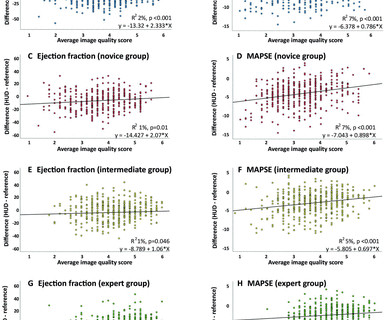
Open Heart
OCTOBER 21, 2022
Background and objectives Echocardiography is the cornerstone of heart failure (HF) diagnosis, but expertise is limited. Non-experts using handheld ultrasound devices (HUDs) challenge the clinical yield. Left ventricular (LV) ejection fraction (EF) is used for assessment and grading of HF. Mitral annular plane systolic excursion (MAPSE) reflects LV long-axis shortening.
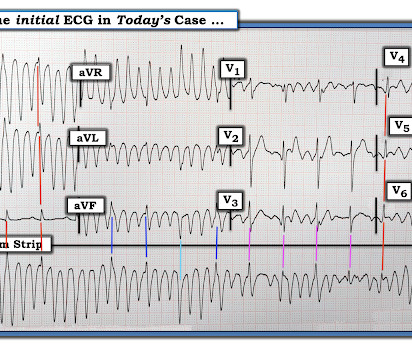
Dr. Smith's ECG Blog
OCTOBER 21, 2022
Submitted by Dr. Arjun J V in India, An elderly patient presented to the ED with multiple complaints. An ECG was recorded in triage: What do you think? Classic for those who have seen it before. The ECG shows a regular narrow complex rhythm which is difficult to see amongst the very severe high voltage artifact which is occurring with a frequency of approximately 300 cycles per minute.

iRythm Technologies
OCTOBER 18, 2022
Interview with mSToPS clinical trial senior author Dr. Steven R. Steinhubl, Scripps Research, about monitoring and screening for undiagnosed atrial fibrillation.

Speaker: Simran Kaur, Co-founder & CEO at Tattva.Health
AI is transforming clinical trials—accelerating drug discovery, optimizing patient recruitment, and improving data analysis. But its impact goes far beyond research. As AI-driven innovation reshapes the clinical trial process, it’s also influencing broader healthcare trends, from personalized medicine to patient outcomes. Join this new webinar featuring Simran Kaur for an insightful discussion on what all of this means for the future of healthcare!

Vector Remote
OCTOBER 17, 2022
Introduction Medical technology has made remarkable advances in the last 50 years and continues to grow despite disruptions caused by the pandemic. The need to adapt to virtual healthcare solutions due to challenges from the coronavirus pandemic has spurred a trend in the growth of remote healthcare to benefit both patients and clinicians. Remote patient monitoring (RPM) is one area where The post Disrupting the Status Quo in Remote Patient Monitoring appeared first on Vector Remote Care.
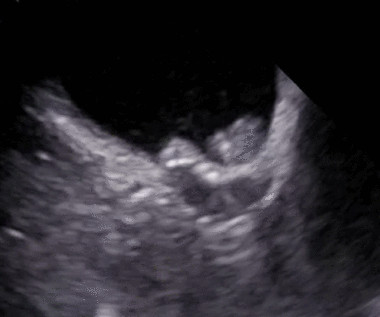
Open Heart
OCTOBER 21, 2022
In patients with atrial fibrillation and previous episodes of bleeding on oral anticoagulant treatment, left atrial appendage occlusion (LAAO) has emerged as an alternative way to decrease the risk of stroke. The use of the procedure has been on the rise, and the news coverage has been dominated by an uncritical acceptance of the benefit of this procedure, which probably have contributed to the increasing number of procedures.
Cardiovascular Update brings together the best content for cardiovascular medicine professionals from the widest variety of industry thought leaders.

Dr. Anish Koka
OCTOBER 16, 2022
On October 7th, 6 pm, the Florida Department of Health sent out a bulletin announcing new guidance from Florida Surgeon General Dr. Joseph Ladapo that recommended against males aged 18-39 years of age from receiving mRNA COVID-19 vaccines. This was based on a study commissioned by Florida that found an 84% increase in the relative incidence of cardiac-related death within 28 days after mRNA vaccination.
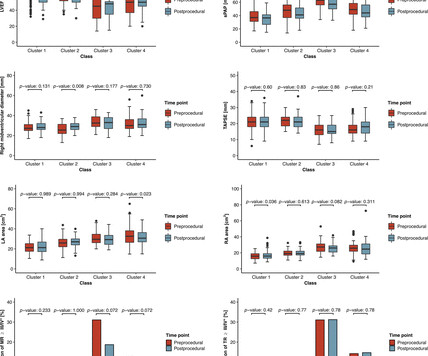
Open Heart
OCTOBER 19, 2022
Objective A novel artificial intelligence-based phenotyping approach to stratify patients with severe aortic stenosis (AS) prior to transcatheter aortic valve replacement (TAVR) has been proposed, based on echocardiographic and haemodynamic data. This study aimed to analyse the recovery of extra-aortic valve cardiac damage in accordance with this novel stratification system following TAVR.
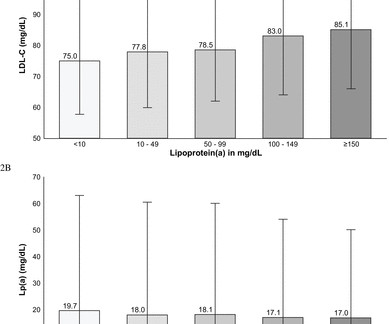
Open Heart
OCTOBER 17, 2022
Objective Lipoprotein(a) (Lp(a)) is an important genetically determined risk factor for atherosclerotic vascular disease (ASCVD). With the development of Lp(a)-lowering therapies, this study sought to characterise patterns of Lp(a) levels in a global ASCVD population and identify racial, ethnic, regional and gender differences. Methods A multicentre cross-sectional epidemiological study to estimate the prevalence of elevated Lp(a) in patients with a history of myocardial infarction, ischaemic st
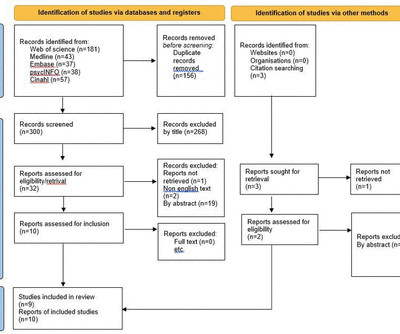
Open Heart
OCTOBER 17, 2022
Background Patients with implantable cardioverter defibrillators (ICD) experience anxiety, depression and reduced quality of life (QoL). Objectives This mixed-methods systematic review evaluates whether ICD support groups have a beneficial effect on mental well-being. Methods Literature searches were carried out in MEDLINE, Embase, CINAHL, PsycINFO and Web of Science.

Open Heart
OCTOBER 17, 2022
Objective We provide succinct, evidence-based and/or consensus-based best practice guidance for the cardiac care of children living with Duchenne muscular dystrophy (DMD) as well as recommendations for screening and management of female carriers of mutations in the DMD -gene. Methods Initiated by an expert working group of UK-based cardiologists, neuromuscular clinicians and DMD-patient representatives, draft guidelines were created based on published evidence, current practice and expert opinio
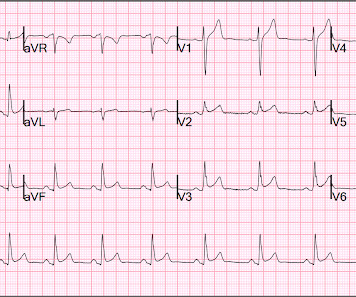
Dr. Smith's ECG Blog
OCTOBER 17, 2022
This ECG has ST Elevation in multiple leads. Is it normal STE? Or is it ischemic STE? What do you think? This ECG is interesting because it mimics TQRSD. There are no S-waves in V2 and V3. BUT look at the very prominent J-waves (J point notching)!! It is several mm high! This is a normal ECG. This patient had CO poisoning but did not have myocardial injury or OMI.
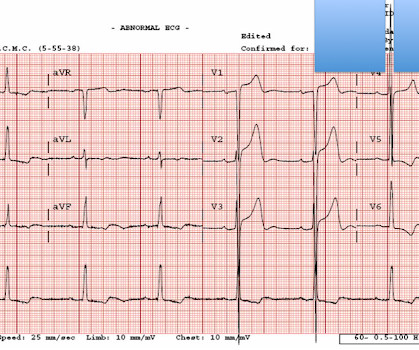
Dr. Smith's ECG Blog
OCTOBER 15, 2022
Pendell (Pendell Meyers, of course), with a little help from Smith, coined a new LAD Occlusion pattern "Precordial Swirl," in which there is rightward STE vector, with STE in V1 and aVR, with reciprocal STD in V5 and V6. It is due to transmural ischemia not only of the anterior wall and apex, but due to transmural ischemia of the septum, usually due to occlusion proximal to the first septal perforator.

Open Heart
OCTOBER 21, 2022
Coronary perforation is a potentially life-threatening complication of percutaneous coronary intervention (PCI). We studied incidence, outcomes and temporal trends following PCI-related coronary artery perforation (CAP). Methods Prospective systematic review and meta-analysis including meta-regression using MEDLINE and EMBASE to November 2020. We included ‘all-comer’ PCI cohorts including large PCI registries and randomised controlled trials and excluding registries or trials limited
Let's personalize your content